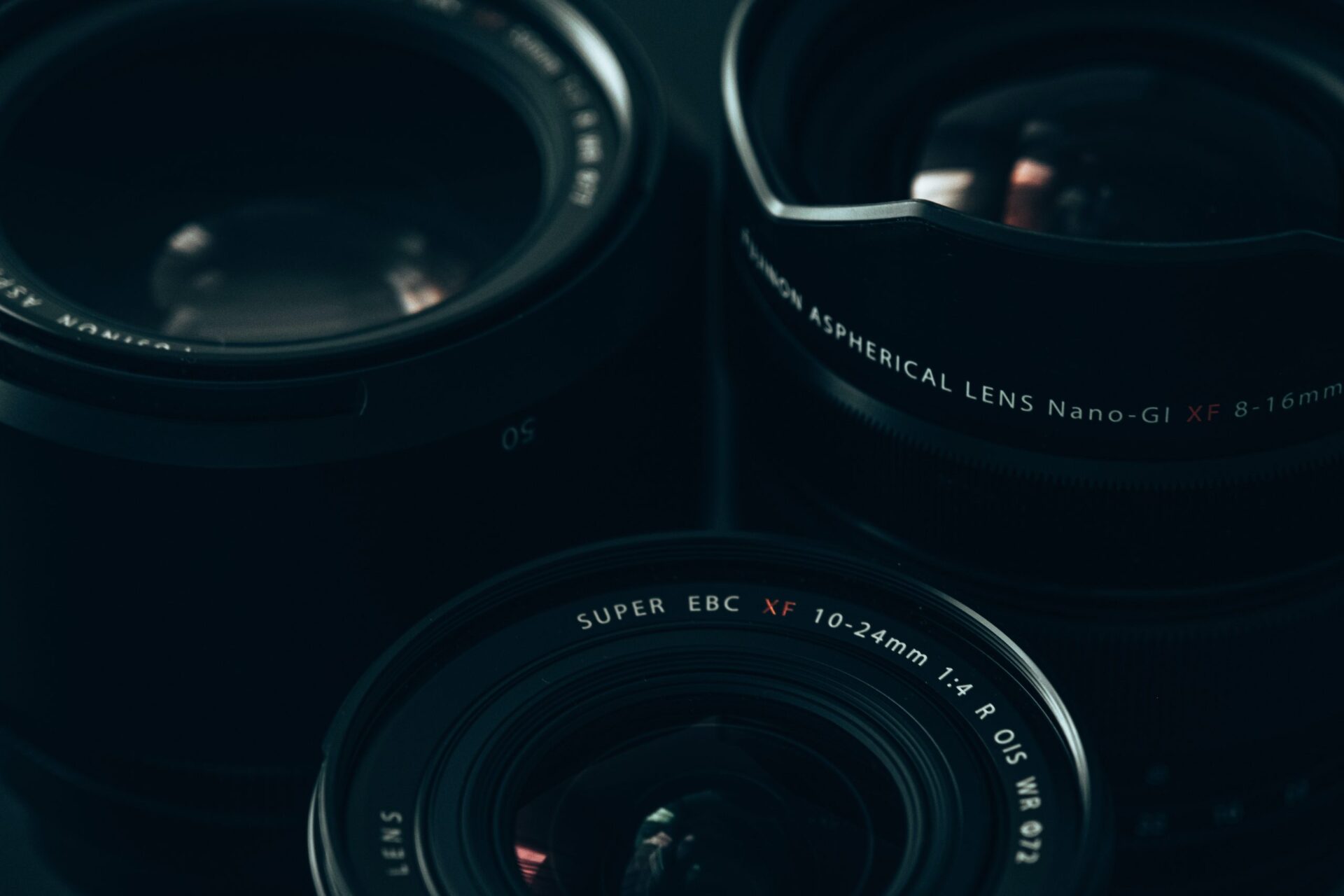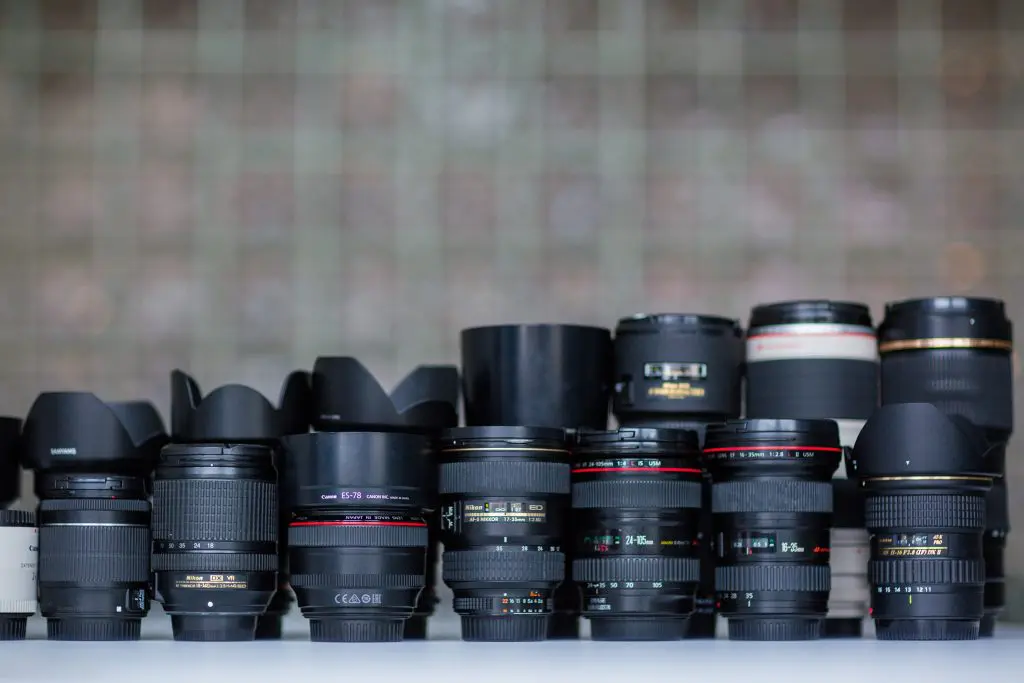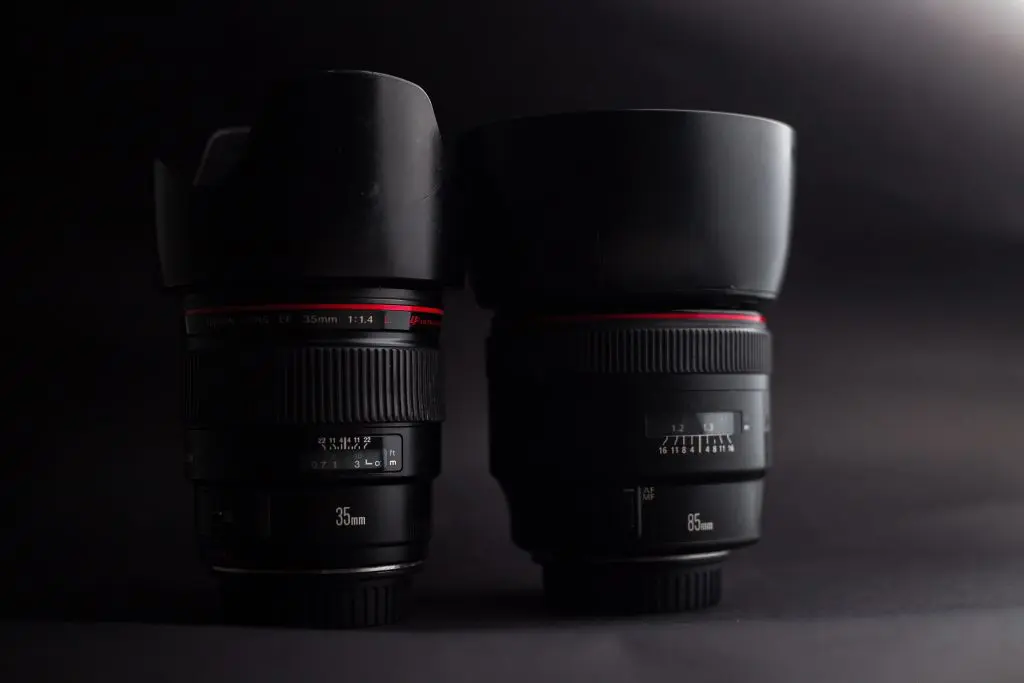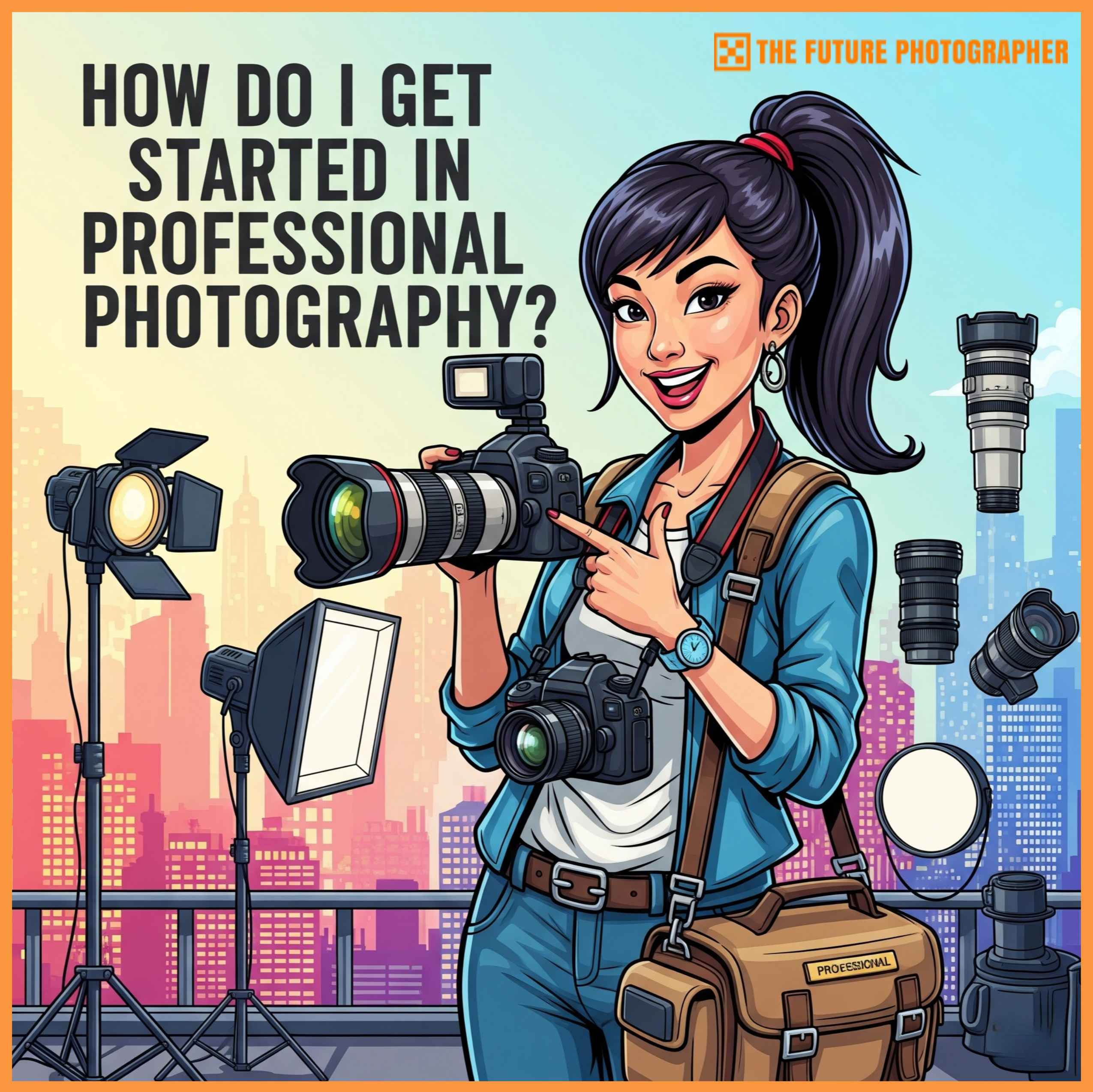
For a photographer, a camera without a lens is useless. Your film, DSLR, or mirrorless camera’s lens is what concentrates light from what we see in the viewfinder into a small, 35mm point on the back. The only type of image you can capture with a camera without a lens is white light. As a result, high-quality lenses can enable you to take excellent pictures even with a low-cost camera. Believe it or not, a low-quality lens can make even the best camera ineffective and result in mediocre images.

Camera Lenses Features
First of all, I thought it would be really helpful to talk about lenses and their features before learning what’s most suitable for you. So, in this part of the article, we discuss focal length, focal range, and aperture.
Focal Length
The focal length of a lens is one of its main features. For the majority of camera lenses, the focal length — how far the lens is “zoomed in”—is the most crucial feature. Also, in terms of focal length, millimeters are used.
The focal length of camera lenses is the distance between the lens’ optical center and the image sensor (or film plane) of the camera (when focused at infinity).

We also need to define “optical center” in order to comprehend this definition of focal length. The optical center is known as the point within a lens where the light that beams from two separate sources enters the lens.
Focal Range and Aperture
The maximum aperture of the lens is indicated by a ratio number that can be found on the front end of the lens barrel.
How much light the lens transmits to the image sensor depends on its aperture.

The quality of the lens in terms of brightness will be shown by how low the maximum aperture value is. While a lower-quality zoom lens’s f-stop changes as you move up the focal range (e.g., f/3.5 at 28mm but f/5.6 at 80mm), you lose at least one stop of light as you move from wide-angle to telephoto. High-quality zoom lenses deliver a constant f-stop throughout the focal range (i.e., an f/2.8 at 35mm and an f/2.8 at 80mm).
Types of Lenses in 2023
Choosing the most suitable type of lens for your photographic activity is key when making your first steps on this road. So, learning about the most popular types of camera lenses, the differences between them, and their uses should be super helpful for every beginner.
Prime Lenses (Best Camera Lenses for Portraits)
Firstly, these fixed lenses closely imitate the perspective and angle of view of what the human eye sees.
Prime lenses are famous for how sharp they are and for the quality of the images they can capture. Due to fixed lenses, the aperture slides can open more. In this way, we get an exceptional focal ratio that’s ideal for low lighting and blurry backgrounds. The 50mm lens is regarded as the standard lens for a 35mm film camera or a full-frame DSLR.


When used with a wide aperture, greater focal lengths (85mm or 100mm) provide the best experience for portraiture. The reason is that they completely reduce any background detail, making it less likely to detract from the main subject.
Zoom and Telephoto Lenses (Most Versatile Camera Lenses)
Even though they are often confused, a telephoto lens is the same thing as a zoom lens, with some differences in focal length. A zoom lens can cover any area (16-24mm or 100-300mm). These camera lenses give you versatility when it comes to the various situations in which you can find yourself.

After all, this type of lens is used in everything that means wildlife/travel/street photography, and sometimes, due to its large compression, in portrait photography.

Finally, a downside of zoom lenses is the aperture which is normally either variable (on cheaper models) or very large, over f/4. However, there are variants of tele lenses that have f/2.8 but the price is considerable; for example, Canon EF 70-200mm f/2.8 (the model for mirrorless is 30-40% pricier).
Macro Lenses (Best Camera Lenses for the Macro World)
Using this kind of lens, macro photography at extreme close-up is possible. They feature a special design that makes it possible for them to capture sharp images at very close range. Therefore, these camera lenses are excellent for wildlife photography since they let you include a ton of information in a single picture. They have focal lengths that range from 50 to 200mm. However, they lose their capacity to focus sharply at other distances. These lenses achieve razor-sharp focus for subjects within the macro focus distance.


Fish Eye Lenses (Best Camera Lenses for a New Perspective)
A fish-eye lens is a type of wide-angle lens that transforms straight lines into curves to produce incredibly wide views. By warping the viewpoint and producing a 180° image, it can occasionally yield round, convex, or oval images. In a fish-eye lens, the focal length ranges from 7 to 16 mm.


Price, Value, and Brands of Camera Lenses in 2023
When it comes to lenses and choosing the brand or quality, it will seem complicated at first, but there are only a few main names that matter. From the beginning, it needs to be clarified that the objectives for mirrorless devices are more expensive but with much newer technologies.
Camera manufacturers are also the ones who produce lenses, with small exceptions such as Sigma and Tamron which make some extraordinary choices at better prices. Lastly, very affordable products for beginners are Canon EF 50mm f/1.8 STM (portraits), Sony E 55-210mm F/4.5-6.3 OSS 9 (wildlife photography and travel), Nikon AF-S DX 35mm f1.8G (street photography).
What’s the Best Camera Lens for You?
In conclusion, picking camera lenses for your photography experience shouldn’t be so hard. You just have to figure out what you want to focus on and what budget you have. The lens is the most essential part of your camera, and you will not regret investing in a good one. It is better to buy a good lens than to take three that don’t satisfy you and don’t push you to your best as a photographer.
So, whether you want a lens that makes gorgeous bokeh or a telephoto for car racing, always choose the right brand and the features that are right for you. Finally, I can’t wait to hear what style of photography attracted you more (if you’re undecided and it seems complicated, the article Portrait vs. Landscape Photography may be helpful) and what lenses you chose. Please tell us in the comment section below what your favorite lens/brand is and share your different experiences to help others.
Share:







One Response